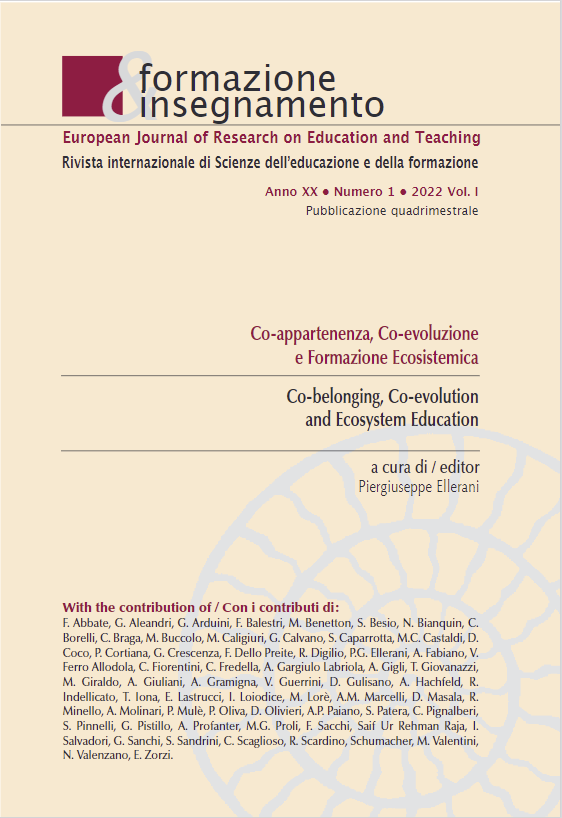Dancing at School: Educational and Formative Dimensions in Childhood
DOI:
https://doi.org/10.7346/-fei-XX-01-22_45Keywords:
Educational dance, Body language, Creative movement, Gymnastics and dance, Curriculum-integrated dance programmeAbstract
Practicing dance at school could become a key element to help preserving both the physical and the mental health of the students, as it simultaneously intervenes on a physical, emotional, social and cognitive level. The knowl-edge and the practice of this art represent a chance to grow for children, since it would allow them to become familiar with their own bodies, to use motion as means of communication, to rediscover their creative potential and to be able to recognize both their strengths and weakness. Thereby, learning to dance should not be merely compared to the correct execution of a step sequence or the comprehension of particular dancing techniques, but it should be recognized as precious learning instrument for the personal development of children. This article proposes a systematic review to help identify the potentiality, or otherwise the limits, associated with the intro-duction of a curriculum-integrated dance programme in kindergarten and primary school.
Downloads
Published
How to Cite
Issue
Section
License
Copyright (c) 2022 Manuela Valentini , Giulia Sanchi

This work is licensed under a Creative Commons Attribution 4.0 International License.
Formazione & insegnamento is distributed under Attribution 4.0 International (CC BY 4.0).
For further details, please refer to our Repository & Archiving Policy, as well as our Copyright & Licensing Terms.





